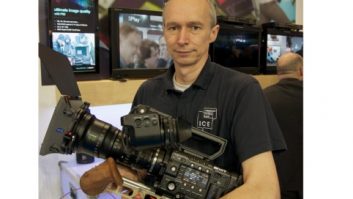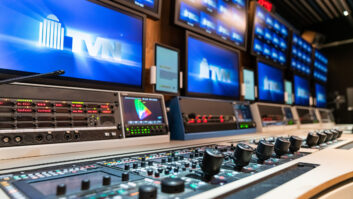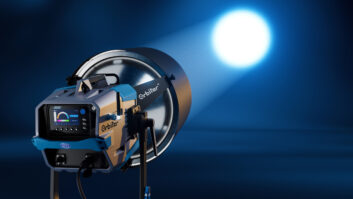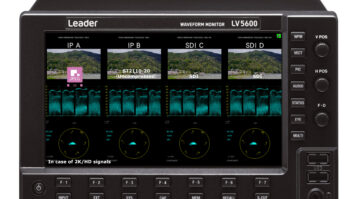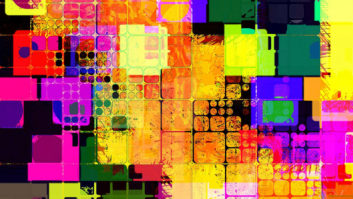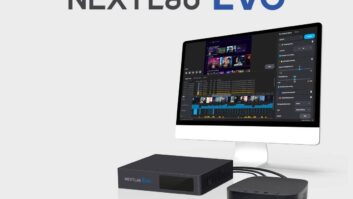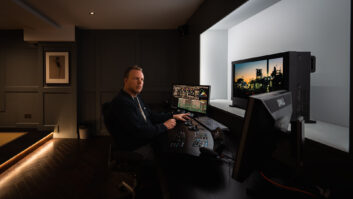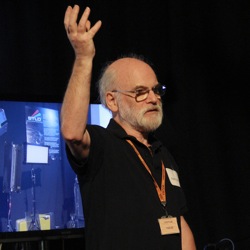
Because of how accommodating the eye is to differences in colour temperature and light quality, “there is no way you can tell from looking at it if it is any good or not. You have to do the measurements,” says Alan Roberts, colour scientist and consultant with Broadcast Project Research. The Colour Rendition Index currently quoted by most light manufacturers was created in 1964, but “hasn’t kept up with changing colour science and was not designed for TV.” As far as TV production is concerned, “it doesn’t deliver reliable results,” says Roberts.
CRI “is held in contempt” even for the architectural lighting it is supposed to be best for, “because it’s an average based on unsaturated colours, whereas people prefer saturated colours,” adds Robert Yeo, director, Pro-Lite Technology, which specialises in spectroradiometry. This is why there is also the Colour Quality Scale, which is an improvement on CRI, but it is designed for architectural lighting and how the eye reacts to direct viewing, not for TV. Both of them are unsuitable for measuring fluorescents, and are even less valid for LEDs.
Indeed, CRI can give a negative score, when, for some productions, such as news, any light has to be better than none.
This is why Roberts, a retired BBC engineer, created the Television Lighting Consistency Index, based on research done by two former BBC colleagues, and persuaded the EBU to adopt it as a recommendation (R.137), which he hopes will “make sure that people don’t make expensive mistakes before buying lights.” Any firms that are using the software and proven to be producing reliable results will be able to get EBU accreditation.
The lighting manufacturers Roberts has talked to “all seem to be absolutely delighted with it.” ETC has already started putting TLCI numbers on its lights, and Gekko Technology says it intends doing so, while Arri and TheLight are also believed to be working on it.
“TLCI takes us forward and I hope that manufacturers take it up,” says DoP Jonathan Harrison. To him, CRI “is totally and utterly useless,” because lamps with the same CRI can produce totally different colours, as the CRI standard covers such a limited range of colours (up to R8) and, crucially, leaves out R9 and R13 (red and yellow) that cover skin tones. “Visually you can create white light with just a mix of red and blue, but this doesn’t work for cameras,” adds Yeo.
“A typical low-cost LED will give a magenta cast, and as the only thing that really matters is skin colour [it is what we shoot 90% of the time], any problems with light in this range will be easily noticeable,” says Harrison. “The only way you can get clean, high-quality skin is to use high-quality light sources, with full spectrum light. You can’t put a filter on it to fill in the gaps in colour.”
LEDs work in a similar way to fluorescents. Where the fluorescent uses a blue source to stimulate phosphors (giving a green colour spike), the LED typically has a more ultraviolet source and gives a blue spike, creating a dip in the spectrum that is even more difficult to fill.
Index linked
Having a better way to measure light is particularly important for non-traditional light sources that don’t typically deliver full spectrum light. “The manufacturers appear to be getting more aware that they have a problem and are working to get it right,” Roberts told a recent joint workshop held by the Guild of Television Cameramen and the EBU (in conjunction with the Society of Television Lighting Directors) at Sky Studios in London.
In creating the TLCI, Roberts set a value of 50 as the point above which colour correction is feasible, and packed the best and worst lighting into small regions at either end. He “extended the bits in the middle, because that is the most crucial area. It gives the maximum range where you need it, so you can make decisions.”
A score of 50-70 would indicate that complex correction would be needed; 70-85 would be simple to correct; while 85-100 would need no correction (so should be the aim for live productions). Scores of 25-50 would require matting correction and still won’t look good, while below 25 would be impossible to correct.
“There is no correlation between CRI and TLCI values […]; they will not relate.” In the CRI a candle scores minus 14, whereas in TLCI it scores 68, because a camera can rebalance to it. “We can perceive colour differences at about the 50 Kelvin level,” explains Yeo, but the TLCI is sensitive to shifts of 1-2K in the tungsten range and 5-10K in daylight. It can also cope with a much wider range (up to 100,000K) than CRI (2000K to 8000K).
The software (which is available free on the EBU website) has been built to mimic a television channel, but not a specific camera or display. “There is no way we can mimic every camera”, although users can load camera data into the software.
Per Bøhler, the NRK’s principal engineer, and chair of the EBU LED Project Group, conducted the camera responsiveness measurements and found the colour response of high-end cameras to be fairly similar (even to cameras of 30 years ago). The main difference was between three-chip and single-sensor cameras, but both have been catered for in creating the standard camera in the software.
It can produce a table that will advise graders on what to do to correct specific colours, and if they can get industry agreement, this could even be passed directly to the grading software.
To make it simpler for users to do the measurements, the EBU has been talking with manufacturers of test equipment to persuade them to build handheld spectrometers with all the TLCI calculations built in, “so you can just point it at a light source and get the reading,” says Roberts.
One way to do this might be to have a spectrometer linked to a smartphone via Bluetooth and send the figures to an App to work it out. Suitable spectrometers are already available, but an App would have to be written.
Colour match
“Other than tungsten or daylight, everything else emits a non-continuous colour spectrum,” explains Harrison. This makes it difficult to match colours. Two fixtures might both be tungsten (or daylight), but that doesn’t mean they will match.
This is why Roberts has also developed a new measure, Television Luminaire Matching Factor, “which allows a Gaffer to take any two luminaires, take a measurement off each, and show how well they will work together.” It also allows them to see the effect of any filtering, as the software includes the entire Lee Filters catalogue, which will also make filter choice easier.
It is necessary because “two different lights with a TLCI of 85 could be different colours.” The TLMF has just been formulised by the EBU, and will be added to R.137. “If this can be incorporated in a handheld meter, it would allow it to be used on set,” says Roberts.
www.bpr.org.uk
www.gtc.org.uk
www.lightingmatters.tv
www.pro-lite.co.uk
tech.ebu.ch/tlci-2012
By David Fox

